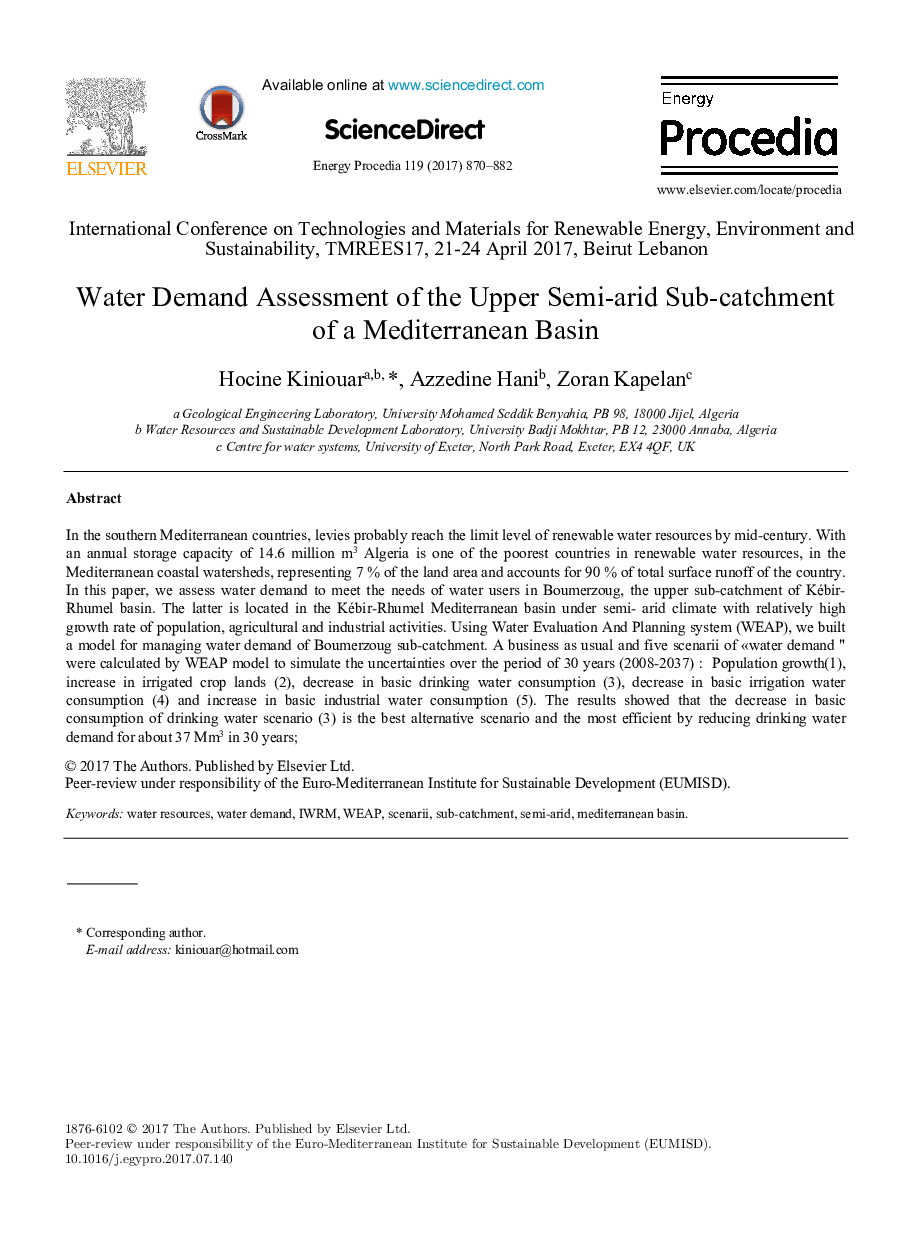| Article ID | Journal | Published Year | Pages | File Type |
|---|---|---|---|---|
| 5445155 | Energy Procedia | 2017 | 13 Pages |
Abstract
In the southern Mediterranean countries, levies probably reach the limit level of renewable water resources by mid-century. With an annual storage capacity of 14.6 million m3 Algeria is one of the poorest countries in renewable water resources, in the Mediterranean coastal watersheds, representing 7 % of the land area and accounts for 90 % of total surface runoff of the country. In this paper, we assess water demand to meet the needs of water users in Boumerzoug, the upper sub-catchment of Kébir-Rhumel basin. The latter is located in the Kébir-Rhumel Mediterranean basin under semi- arid climate with relatively high growth rate of population, agricultural and industrial activities. Using Water Evaluation And Planning system (WEAP), we built a model for managing water demand of Boumerzoug sub-catchment. A business as usual and five scenarii of «water demand " were calculated by WEAP model to simulate the uncertainties over the period of 30 years (2008-2037) : Population growth(1), increase in irrigated crop lands (2), decrease in basic drinking water consumption (3), decrease in basic irrigation water consumption (4) and increase in basic industrial water consumption (5). The results showed that the decrease in basic consumption of drinking water scenario (3) is the best alternative scenario and the most efficient by reducing drinking water demand for about 37 Mm3 in 30 years;
Related Topics
Physical Sciences and Engineering
Energy
Energy (General)
Authors
Hocine Kiniouar, Azzedine Hani, Zoran Kapelan,
